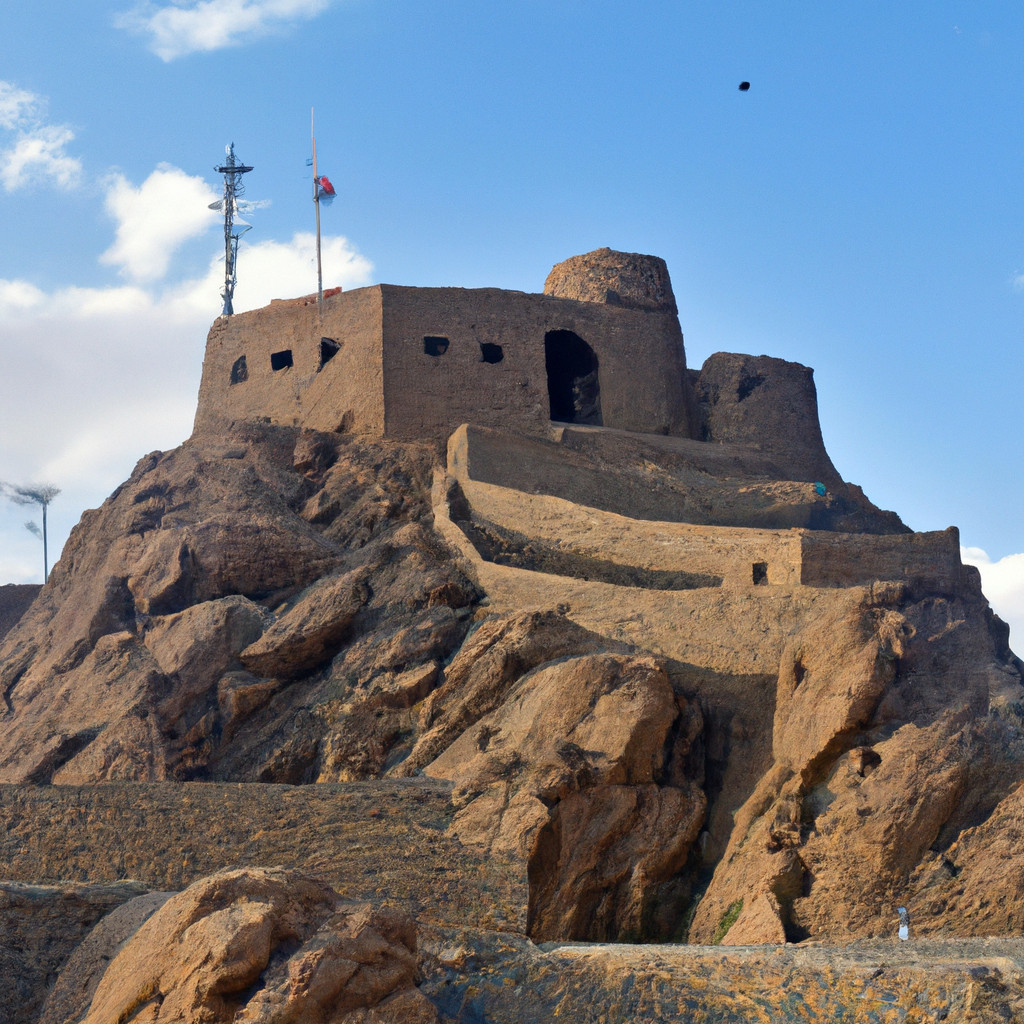Musa Qala Fort in Musa Qala is one of many fascinating sites that both foreign visitors and local tourists can explore while they visit Afghanistan and exploring Helmand Province. The fort has seen countless historical happenings and has been the silent narrator, bearing the impact of monumental cultural events. Its rugged walls hold the essence of Afghan history and culture tightly in their sturdiness, echoes of which are audible in the hush-whispers of its passageways.
Musa Qala Fort Most Important Events
- The Battle of Musa Qala: The fort was a pivotal landmark during the lengthy Battle of Musa Qala in 2007. It served as a strategic stronghold for the conflicting forces, its legacy shaped by the events of combat and resilience.
- The British Fortification: The British army’s contingent in Helmand province fortified the fort in 2006. This important event added a new dimension to its architectural and historical prominence.
- The Transition to Civil Control: The transition of control from military forces to civil control in 2008 was a significant development, transforming the fort into an emblem of peace and perseverance.
History of Musa Qala Fort in Musa Qala
Historically, the Fort has played a crucial role since its establishment in the 1880s. The strategic location of Musa Qala Fort has made it a central point of several disputes and conflicts over the century. Nestled on the banks of the Musa Qala River, the fort illustrates the era it was constructed with its unique architectural style.
Musa Qala fort was used principally for defense. Its high sturdy walls were emblematic of the fort’s integral role in several battles, providing shelter and support to the fighters. After a tumultuous history of being handover several times, the fort was considerably damaged but with every reconstruction, a new layer was added to its saga.
In the recent past, the fort was fortified by British troops during their tenure in Afghanistan. After this, locals and international organizations contributed to its restoration. Today, the fort stands tall, an emblem of the thriving efforts of Afghans towards preserving their heritage.
Why It’s Important to Afghan History
Musa Qala Fort holds a distinguished place in Afghan history. Its walls echo with tales of its tumultuous past, making it a living heritage site. The fort has seen numerous transitions in its history, from being a pivotal landmark in significant battles to serving as a symbol of resilience, the fort reflects the spirit of Afghanistan.
Moreover, the fort’s history also aligns with the overall historical timeline of the country. Tracing its history, one also traces the path that Afghanistan has walked over time. Its strategic location, historical significance, and architectural grandeur make it a pivotal site in understanding the narrative of Afghan history.
Why to Visit Musa Qala Fort
The architectural appeal of the Musa Qala Fort is its top allure. The fort’s ruggedly charming outlook, coupled with its intriguing history, draws visitors towards it. Its watchtowers provide captivating views of the Musa Qala River and the surrounding areas, adding to its scenic charms.
Additionally, a visit to Musa Qala Fort is like reading an open book of history. The historic events that unfolded here, the civilizations it nurtured, and the legacy it carries inspire awe and reverence. Plus, you never know, as you explore the fort, you might come across some hidden charm waiting to be discovered.
Expect these top five highlights:
- Stunning view from the watchtowers
- Walk through the silent, history-saturated corridors
- An insight into Afghan history
- Opportunity to explore Afghan architectural style
- Gain a new perspective on Afghanistan’s resilience
The fort is located in Helmand province, easily accessible from major cities. The best time to visit is during the winter months of November to February when the weather is most enjoyable.
Cultural & Tourist Significance
Musa Qala Fort is a cornerstone of Afghan culture and history. As one steps inside the fort, one steps into the past. The fort opens up pathways to explore Afghan culture, the way of life, architectural styles, and history. Its cultural significance stems from its organic narration of Afghan society over centuries.
The fort’s tourist significance revolves around its capacity to provide an immersive cultural experience. It goes beyond being just a sightseeing spot. Instead, it offers a broader understanding of Afghanistan – the land, the people, and the history.
Moreover, Musa Qala Fort plays a crucial role in boosting local tourism. It serves as an attraction that draws visitors, thus aiding the local economy. It is also an excellent site for cultural exchange, where tourists can interact with locals and gain first-hand knowledge of their vibrant culture.
Interesting Facts
Musa Qala Fort boasts of several less-known facts that are as intriguing as its conspicuous history. For one, did you know that the fort was at one point left abandoned before being revitalized by the local community?
Unbelievably enough, before being recognized as an essential heritage site, the fort faced years of neglect. Today, it stands as a testament to the resilience of the Afghan people and their respect for their heritage.
Local legends also share that the fort hides a treasure trove within its formidable walls. While no treasure has been discovered yet, these tales add a layer of charm to the fort. They enhance the aura of intrigue and make one’s visit to the Musa Qala Fort a delightful exploration into the heart of Afghanistan’s rich history.


